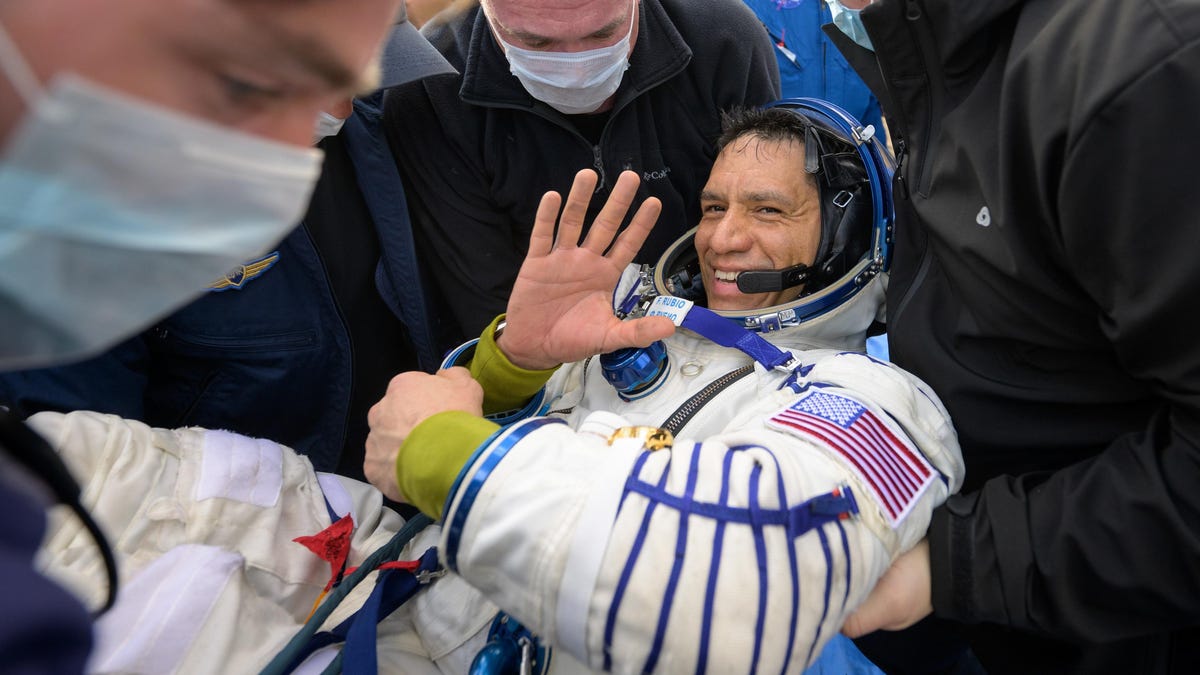
After staying on board the International Space Station (ISS) for more than a year, NASA astronaut Frank Rubio has finally returned home with a new record of the longest single spaceflight by a U.S. astronaut.
Along with his crew mates, Roscosmos cosmonauts Sergey Prokopyev and Dmitri Petelin, Rubio made a parachute-assisted landing in Kazakhstan on Wednesday at 7:17 a.m. ET. The trio departed on board the Soyuz MS-23 spacecraft, which undocked from the ISS at 3:54 a.m. ET, after spending 317 days in low Earth orbit.
“Frank’s record-breaking time in space is not just a milestone; it’s a major contribution to our understanding of long-duration space missions,” NASA Administrator Bill Nelson said in a statement. “Our astronauts make extraordinary sacrifices away from their homes and loved ones to further discovery.”
Rubio launched to the ISS on September 21, 2022 on board a Russian Soyuz crew capsule. In December 2022, the spacecraft that transported Rubio began leaking coolant into low Earth orbit while attached to the ISS. As a result, the spacecraft was deemed unfit to fly Rubio and his two crew mates back to Earth and their mission was extended by another six months.
Rubio became the first U.S. astronaut, and one of only six people, to spend a year in space. On September 11, Rubio beat the previous record of 355 days set by Mark Vande Hei in 2022.
A week before his scheduled return to Earth, Rubio admitted that he would have turned down the mission had he known he’d end up staying that long in low Earth orbit. “If they had asked me up front before training, because you do train for a year or two years for your mission, I probably would have declined,” Rubio told reporters during a live broadcast from the ISS on September 19.
During his 371 days on board the space station, Rubio completed around 5,936 orbits of Earth and traveled 157,412,306 statute miles or the equivalent of approximately 328 round trips to the Moon and back, according to NASA.
For more spaceflight in your life, follow us on X and bookmark Gizmodo’s dedicated Spaceflight page.






